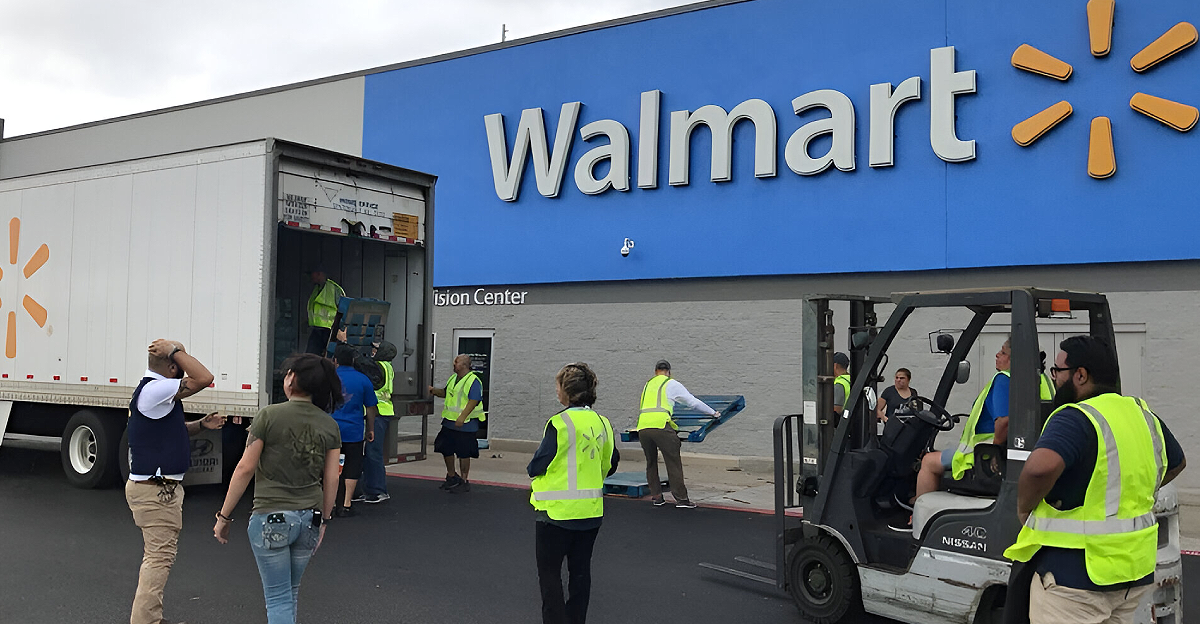
Walmart, one of the most loved stores in the U.S., faces uncertain times due to understaffing in more than 300 stores nationwide. The sudden loss of many workers from schedules has raised urgent questions about employee safety, corporate responsibility, and the ripple effects on local economies.
As the situation unfolds, questions abound regarding the safety and well-being of Walmart’s vast workforce, and speculation is mounting about the possible causes behind these mysterious events. Authorities are actively investigating, and Walmart’s leadership is under intense scrutiny as they work to protect their employees and restore confidence.
The Vanishing Workforce: What’s Happening?

The sudden workforce drop-off has left employees and managers reeling, with many struggling to keep stores operational. Reports have surfaced of entire shifts being removed from schedules overnight, with one worker noting, “Our store lost 10 workers with visas in a single day.” Another claimed dozens were gone from a 400-person store.
This is extremely concerning as entire teams have been removed from shift rosters overnight, with some stores losing dozens of workers in a single day. This has led to severe staff shortages, forcing those who remain to take on extra responsibilities and work longer hours to keep the doors open.
The Scale of the Shutdown

The magnitude of Walmart’s operational strain is staggering. Over 300 stores nationwide have reportedly experienced major disruptions, with some temporarily halting business or reducing hours. This shutdown represents one of the largest disruptions in the company’s history, impacting thousands of employees and countless communities that rely on Walmart for daily necessities.
In many regions, especially rural and small-town America, Walmart is a primary source for groceries, household goods, and employment. The closure of many stores has left shelves empty, forced customers to travel long distances for basic needs, and created a ripple effect throughout local economies.
Impact on Store Operations

With critical staffing gaps, many stores have been forced to reduce their hours, limit services such as curbside pickup, and even close entire departments like the deli or electronics section for extended periods. Remaining employees are stretched thin, often taking on multiple roles to keep basic functions running, leading to longer checkout lines, empty shelves, and a decline in overall customer service.
Managers are also feeling the strain. “What the average customer sees in the store is forcing the manager to step out of that manager role…” said one assistant manager, who asked to remain anonymous. “So you’ll have managers that are cashiering, stocking shelves. We’re trying to take care of our managerial duties too. Managers are not getting proper lunches or getting breaks.”
The Immigration Ruling That Changed Everything

The U.S. Supreme Court ruled in late May 2025 to end legal protections for more than half a million migrants from Cuba, Haiti, Nicaragua, and Venezuela. These workers, who had been allowed to live and work in the U.S. under the Biden-era “humanitarian parole” program, suddenly found their legal status and their jobs revoked almost overnight. Regarding Walmart, stores nationwide were instructed to identify employees whose work permits were expiring, and many were let go if they could not provide new authorization.
The fallout was swift and severe. In states like Florida and Texas, where migrant populations are largest, entire shifts vanished from store schedules, leaving departments understaffed and operations strained. To make things even worse, Walmart has to follow strict federal I-9 verification requirements against the risk of discrimination claims, all while trying to keep stores running and communities served. “Walmart can’t knowingly employ someone without valid work papers, but firing them too quickly risks discrimination charges”, explains immigration lawyer Loren Locke.
The Only Corporate Response Option

Walmart’s corporate leadership has initiated emergency measures to stabilize its business and comply with new legal realities. The company swiftly directed store managers to review and reverify the work eligibility of all employees affected by the recent Supreme Court immigration ruling.
Workers unable to provide updated authorization were immediately removed from schedules, a move described by legal experts as a “compliance crisis,” given the risk of steep federal penalties for employing unauthorized workers.
Customer Frustration and Confusion

These extreme changes haven’t gone unnoticed; in fact, customers express serious concern and frustration about store service and closures. Shoppers have encountered long lines, closed departments, and empty shelves, with limited staff available to answer questions or assist with basic needs.
Many have taken to social media to vent about “traffic jam” conditions at checkout. Some stores have closed all self-service kiosks and left only a handful of traditional registers open. “Only two cash lanes open and no one in toys,” tweeted a frustrated shopper.
Walmart’s Official Silence

During this entire dilemma, Walmart has kept a very strategic silence on its stance. While employees and customers alike have turned to social media to voice their confusion and concern, the company has refrained from addressing the specifics of the staffing crisis in any official capacity.
Reports indicate that, even as store managers received urgent directives to audit employee work permits and comply with new legal requirements, Walmart’s public communications have focused on routine business updates and future growth plans, sidestepping the immediate turmoil unfolding across its stores.
Union and Advocacy Group Reactions

Major unions, including the United Food and Commercial Workers (UFCW), have sounded the alarm about the abrupt job loss, calling it a “crisis of corporate responsibility.” Labor leaders have condemned Walmart’s handling of the crisis, arguing that the company’s compliance-driven terminations have left thousands of workers without recourse or support.
Online campaigns and petitions are circulating, urging Walmart to provide severance, rehire affected employees where possible, and engage in meaningful dialogue with worker representatives.
An Uncertain Future

As Walmart navigates the aftermath of its workforce crisis and sweeping operational disruptions, the path to recovery remains fraught with uncertainty. Questions for many affected communities and workers linger about job security, the future of local stores, and whether Walmart’s new strategies will restore the stability and confidence that once defined the retail giant.
The coming months will test Walmart’s ability to adapt and recover in a retail landscape facing many challenges and uncertainty.
